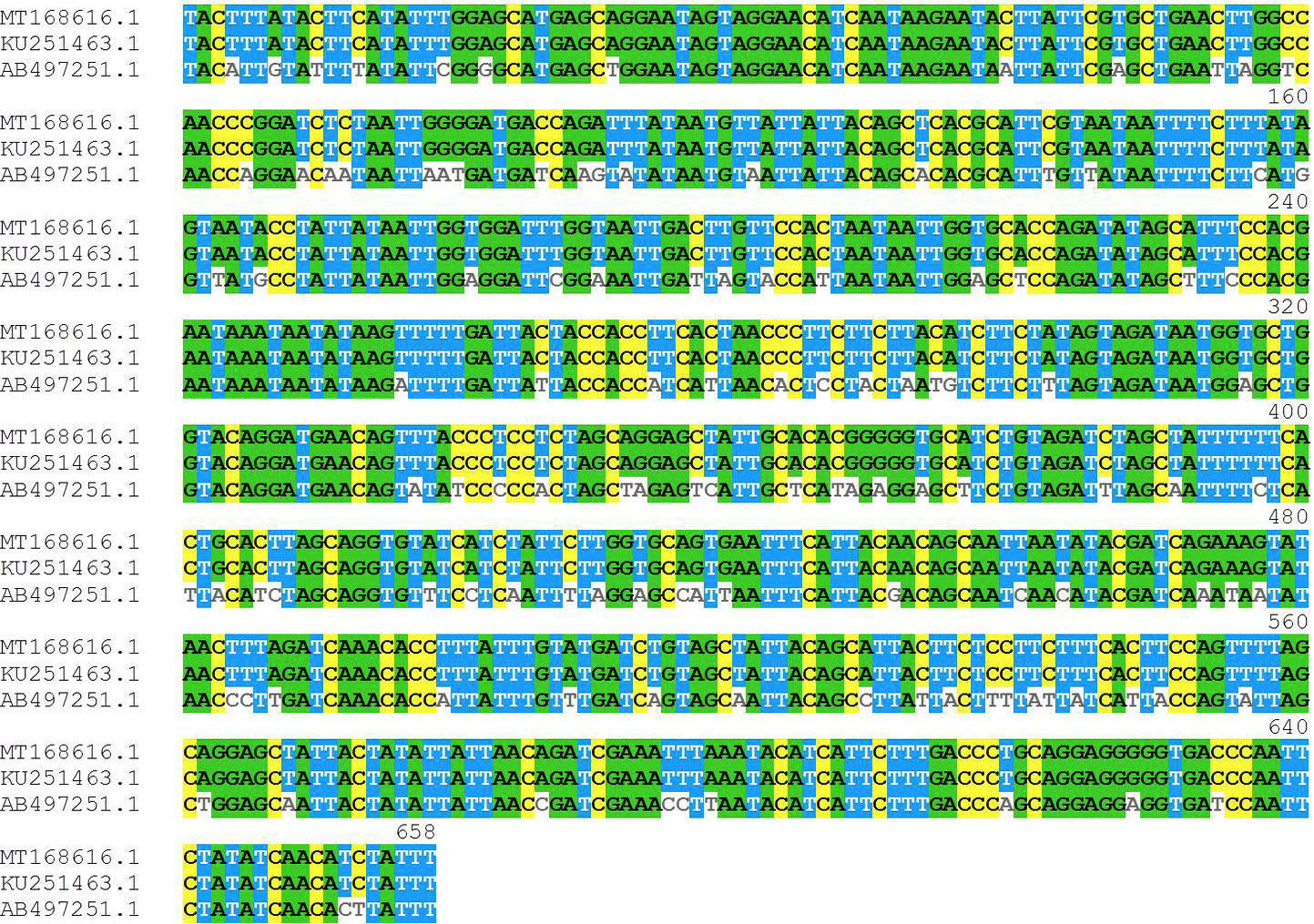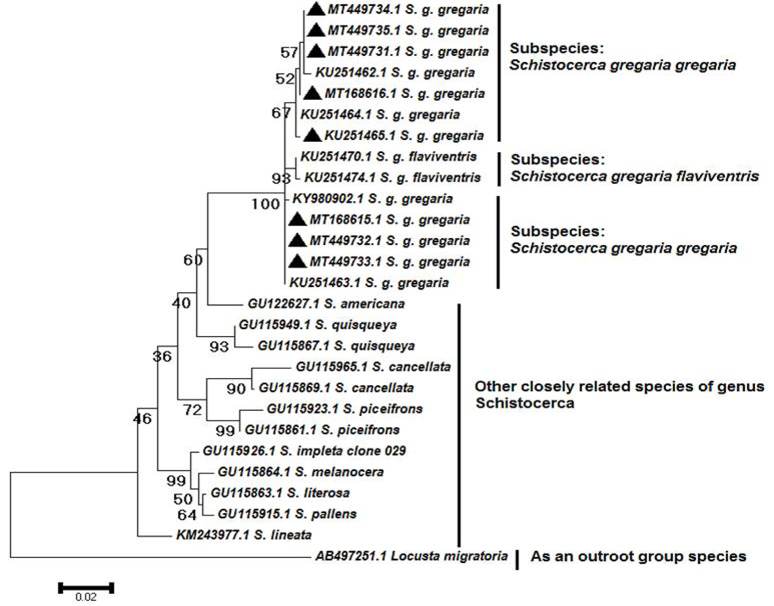Molecular Evidence for the Association of Swarm Forming Desert Locust, Schistocerca gregaria gregaria (Forskål) in Pakistan with Highly Prevalent Subspecies in Sahara Desert of Africa
Molecular Evidence for the Association of Swarm Forming Desert Locust, Schistocerca gregaria gregaria (Forskål) in Pakistan with Highly Prevalent Subspecies in Sahara Desert of Africa
Jam Nazeer Ahmad1,*, Samina J.N. Ahmad1,2,*, Mubashir Ahmad Malik1, Abid Ali1, Muhammad Ali3, Ejaz Ahmad1, Muhammad Tahir2 and Muhammad Ashraf2
Molecular alignment by Clustal Omega from sequenced DNA of desert locust, S. gregaria gregaria from Pakistan (MT168616.1 SG-BKR2); and S. gregaria gregaria from foreign country (KU251463.1) and Locusta migratoria (AB497251.1) based on mitochondrial Cytochrome oxidase I gene based primers.
Molecular phylogenetic analysis by Maximum Likelihood Method: Phylogenetic Tree produced from 8 Pakistani DNA sequences of desert locust, S. gregaria gregaria (Triangles: NCBI submitted Accession numbers) and 19 other locust sequences based on mitochondrial Cytochrome oxidase I gene based primers.
The locations of desert locusts (S. gregaria) found in Southern and Eastern Africa towards Asia through gulf countries in Pakistan developed during 2018-2020. Arrows show the expected potential alternate routes of desert locust, S. g. gregaria, a gregarious subspecies recently found in Pakistan (2019-2020 locust attack) and originated in Northern Africa (Sahara Desert). One potential route is from Sahara desert through Arabian Desert (Saudi Arabia and Iraq) to Iran and Pakistan. 2nd is from Sahara desert (Sudan) and Eastern Africa (Kenya, Ethiopia, Somalia) through Yemen, Oman and Saudi Arabia to Iran/India and Pakistan. Potential threat of locust entrance from neighboring countries (Iran, India and Afghanistan) is highlighted.













